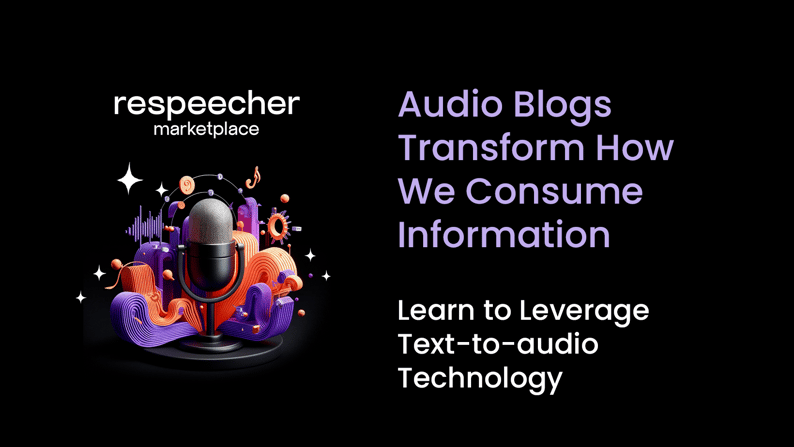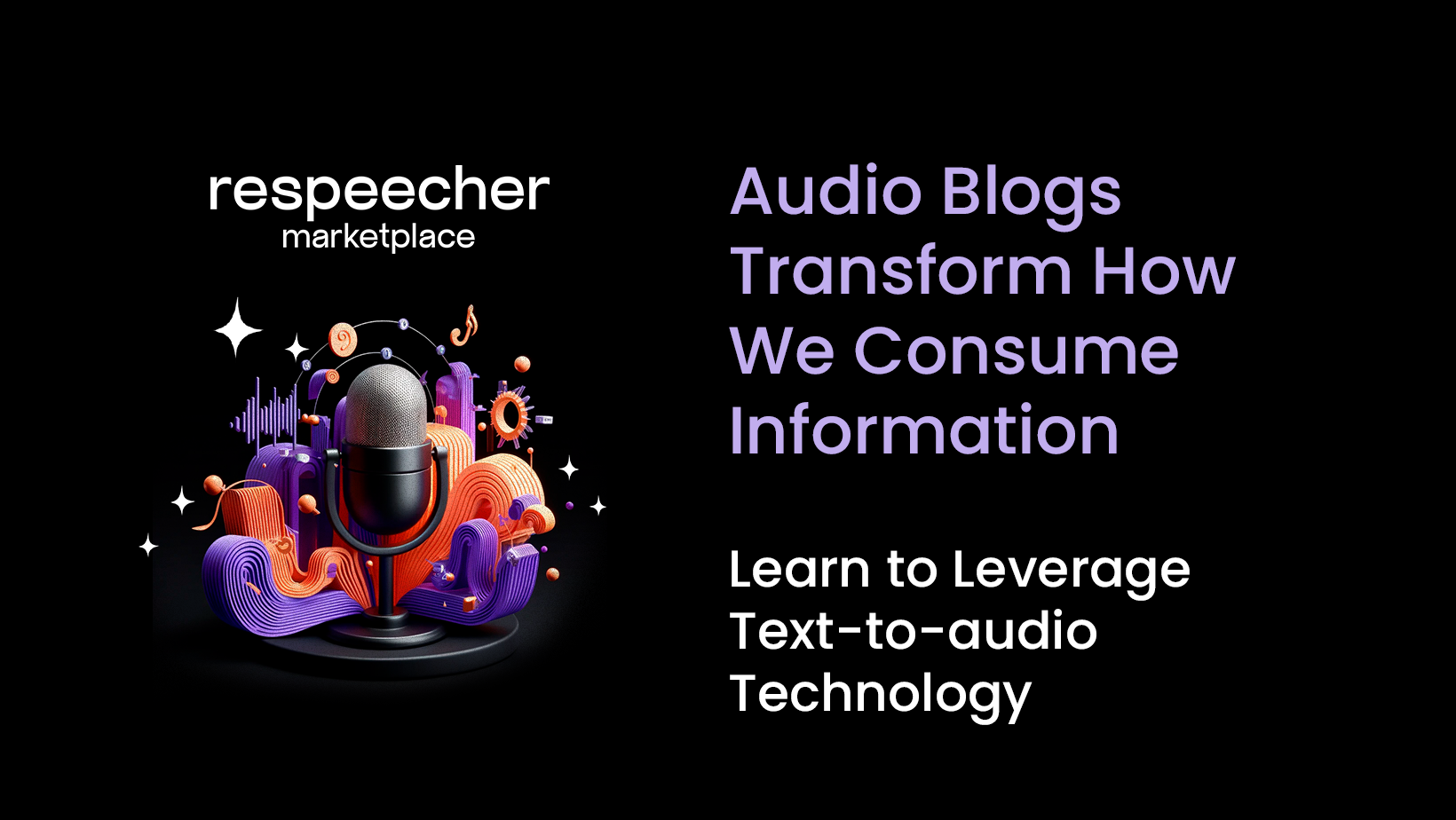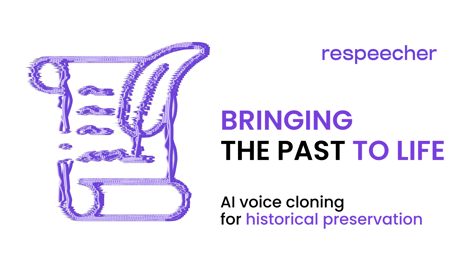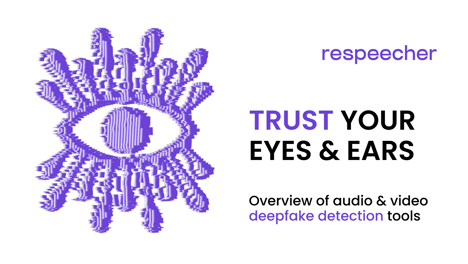Audio Blogs Transform How We Consume Information: Learn to Leverage Text-to-Audio Technology

In recent years, audiences are increasingly moving towards listening rather than reading. This trend reflects a fundamental change in how we engage with information and entertainment in the digital age. The new shift allows bloggers and content creators to adapt and innovate. Podcasts, audiobooks, and even audio blogs would be much easier to create with text-to-audio technology, a transformative tool that empowers creators to leverage the growing demand for audio content. By converting written articles, blog posts, and other textual content into engaging audio formats, content creators can reach new audiences and deepen connections with existing ones in ways previously unexplored.
Text-to-audio in the Blogosphere
Text-to-audio technology (or text-to-speech technology, TTS) is a tool that converts written text into spoken words with remarkable accuracy and natural-sounding speech using voice AI. It utilizes advanced algorithms and machine learning techniques to replicate human speech patterns, intonations, and cadences. In the blogosphere, TTS technology can seamlessly transform written blog posts into high-quality audio content. By simply inputting the text into a TTS platform or software, bloggers can generate audio versions of their articles in a matter of seconds without compromising on the professional standard of their content.
One of the most significant advantages of TTS technology is its ability to provide an alternative way to engage with content. By offering audio versions of blog posts, creators cater to auditory learners who absorb information more effectively through listening. Moreover, TTS enables individuals with busy lifestyles to consume content on the go, whether during their commute, workout, or household chores. Additionally, TTS enhances accessibility for those with visual impairments, ensuring everyone can access and enjoy the content regardless of physical limitations.
Expanding Reach with TTS
Text-to-speech technology not only revolutionizes how content is consumed but also significantly extends the accessibility of blogs to a broader audience. Here's how:
Preference for Listening: In a fast-paced world where time is of the essence, many individuals prefer listening to content rather than reading it. TTS technology caters to this preference by providing an audio alternative to written blog posts. Whether commuting, exercising, or performing household chores, listeners can conveniently engage with blog content on the go, tapping into moments where reading might not be feasible or preferred. This accessibility accommodates the lifestyles of busy people and multitaskers who value the flexibility of consuming information through audio formats and seek hands-free content.
Accessibility for People with Disabilities: TTS technology is crucial in making blog content accessible to individuals with visual impairments or reading disabilities. By converting text into speech, TTS platforms empower these individuals to access and enjoy audio blog posts without relying on traditional written formats. This inclusivity ensures that content creators reach a diverse audience and uphold principles of accessibility and equity in digital content consumption.
Global Audience Reach: Another key advantage of TTS technology is its potential to reach a global audience by translating and vocalizing content in multiple languages. Through multilingual TTS capabilities and voice AI, bloggers can overcome language barriers and cater to diverse linguistic communities worldwide. This content localization enhances accessibility, facilitates cultural exchange, and fosters border connections. By harnessing the power of TTS for multilingual content delivery, bloggers can expand their reach and amplify their message on a global scale.
Benefits for Creators and Listeners
Text-to-speech technology revolutionizes the content experience for both creators and listeners, offering a host of benefits that enrich engagement and streamline content production:
Personalized Voice Selection: TTS platforms often provide a range of AI-powered voices for creators, allowing them to select a voice that best aligns with their brand or resonates with their audience, whether it's a professional, authoritative tone or a friendly, conversational style.
Emotion-Rich Intonations: Advanced TTS systems incorporate natural-sounding intonations and inflections, imbuing the audio content with emotional depth and authenticity, from conveying excitement and enthusiasm to empathy and sincerity.
Tailored Listening Experiences: TTS platforms offer creators the flexibility to customize the listening experience for their audience. It might include adjusting the playback speed, adding pauses for emphasis, or incorporating background music or sound effects.
For creators, TTS technology also delivers efficiency benefits:
Scaling Voice Without Extra Work: TTS enables creators to scale their voices without additional recording sessions. Once the written content is inputted into the TTS platform, it can be instantly transformed into high-quality audio content. This scalability allows creators to produce more content in less time.
Quick Production of Audio Content: TTS technology empowers creators to quickly produce audio content on demand, responding to emerging trends, news events, or audience demands with agility and efficiency.
Practical Applications
Several blogs have successfully leveraged text-to-speech technology to enhance audience engagement and accessibility. One notable example is the blog of LinkedIn co-founder Reid Hoffman. By integrating TTS into his blog, Hoffman expanded his reach to a broader audience, including busy professionals who prefer listening to content while on the go. This resulted in increased engagement and retention rates and a more inclusive experience for individuals with visual impairments or reading disabilities.
Another example is Jolly, a popular YouTube channel run by friends Josh and Ollie. They faced a unique challenge when Ollie secretly ghost-wrote Josh's autobiography. While the book became a success, Josh had no interest in reading his "own" masterpiece, even for a requested audiobook. To solve this, Ollie turned to Respeecher, seeking to create an audio version narrated by Josh himself with an AI voice generator. Despite challenges, Respeecher developed models capable of mimicking Josh's voice and emotions, resulting in a natural-sounding audio autobiography. The project showcased Respeecher's ability to deliver pitch-perfect quality, eliminate text-to-speech pitfalls, and provide creative control, ultimately bringing Ollie's vision to life.
Conclusion
With its ability to seamlessly convert written text into natural-sounding speech, voice synthesis and AI in blogging open up a world of possibilities for content creators, offering new avenues for storytelling, audience engagement, and accessibility. We expect TTS technology to evolve and ethically integrate into various aspects of our digital lives. From personalized voice assistants guiding us through daily tasks to immersive content experiences enhancing our entertainment and education, the applications of TTS are limitless.
Bloggers and content creators should explore Respeecher Voice Marketplace to tap into the transformative power of TTS and elevate their digital storytelling efforts. With its innovative TTS solutions and diverse range of voices, the Voice Marketplace offers creators the tools they need to captivate audiences and enhance engagement. Furthermore, companies seeking to integrate TTS voices into their products can leverage Respeecher's API, seamlessly incorporating high-quality voices into their applications, platforms, and services. Check it out today!
FAQ
Text-to-speech (TTS) technology converts written text into spoken words by using voice AI and voice synthesis. It employs machine learning and algorithms to mimic human speech patterns, creating natural-sounding voices for audio content, enhancing digital storytelling, and providing personalized audio experiences.
TTS enables creators to scale content production, offering quick audio content creation without additional recording sessions. With AI-powered voices, creators can deliver emotion-rich intonations, and personalized voice selections, allowing for efficient, high-quality audio content for a wider audience.
TTS improves accessibility by converting blog content into audio, making it accessible to people with visual impairments or reading disabilities. This AI-powered tool offers a personalized audio experience for diverse audiences, ensuring inclusive digital content consumption across different communities.
Yes, Respeecher Voice Marketplace provides scalable TTS solutions that can handle large-scale content production. It allows creators and businesses to easily generate multilingual content and produce high-quality, natural-sounding audio, enabling seamless integration into global marketing strategies.
Text-to-speech (TTS) converts text into speech using AI-powered voices, while voice cloning replicates a specific person’s voice for personalized applications. TTS is ideal for general audio content, while AI voice cloning focuses on reproducing unique, individual voices for more customized experiences.
Glossary
Text-to-speech (TTS)
Audio content
Voice AI
Personalized audio experiences
Digital storytelling

- voice synthesis
- AI voice generator
- voice synthesis software
- generative AI
- Respeecher Voice Marketplace
- text to speech
- voiceover generator
- Podcasts and Audiobooks
- voice ai
- TTS
- gen AI
- TTS technology
- text-to-speech technology
- audio blogs
- hands-free content
- AI-powered voice
- text reader
- text-to-audio technology
- digital storytelling
- immersive content
- AI in blogging
- auditory learning
- text to audio





